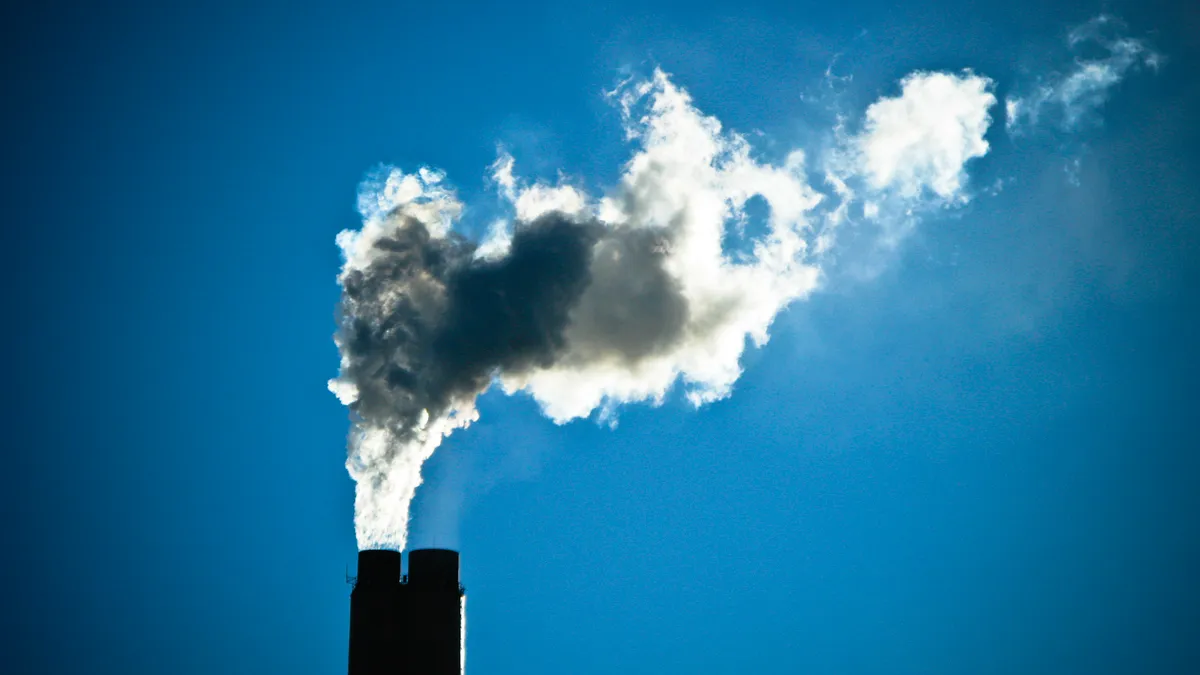Dive Brief:
- Southwestern Electric Power Company (SWEPCO) and Cleco Power filed their final integrated resource plans (IRP) for 2019 last Friday, shifting focus from their co-owned lignite coal plant to other fossil fuel and renewable resources.
- Cleco, the operator of the lignite-powered Dolet Hills plant, announced earlier this year it would shift to seasonal dispatch of the plant, and SWEPCO said it will "continue to evaluate operations" of that plant, in its IRP.
- Cleco also seeks to procure up to 400 MW of solar and up to 1,000 MW of wind by 2038, noting an upcoming request for proposals for 500 MW of unforced renewable capacity. SWEPCO, a subsidiary of American Electric Power, plans to add 1,400 MW of wind in the next 10 years, according to its final IRP.
Dive Insight:
Coal prices are proving more economic from the Powder River Basin and the Illinois Basin, compared to the lignite mining assets co-owned by the two utilities, partly prompting the shift in dispatch for the jointly-owned Dolet Hills plant.
In addition, the Cleco and SWEPCO IRPs show the utilities are continuing to invest in coal assets, though putting units on standby when they become less economic.
Dolet Hills is Cleco's only lignite-fueled generating station, and the owners would have to be on the same page about the plant's future to retire the unit. SWEPCO has a second lignite-fired unit, the Pirkey Power Plant, and the utility had analyzed an IRP scenario including an early retirement of the Texas-based plant. Clean energy advocates want a similar analysis from SWEPCO for Dolet Hills, according to questions in SWEPCO's 2018 IRP filed with Arkansas regulators.
In its Louisiana IRP, SWEPCO said the seasonal operation of Dolet Hills "does not impact" its "summer peak capacity position."
Cleco had began a shift to reduce coal operations as part of its acquisition of NRG Energy's South Central Business.
Cleco announced it would add 3.5 GW of fossil fuel generation through the South Central Business, approved in January by the Louisiana Public Service Commission. As part of the agreement, Cleco pledged to reduce operations at 1,200 MW of its coal-fired units. Cleco announced it would stop burning coal at a 580 MW unit by 2025 at its Big Cajun II plant, one of the assets in the South Central Business acquisition, and shift the 721 MW Dolet Hills to seasonal as opposed to year-round dispatch, at a reduced capacity of 638 MW.
But the economics of lignite remain a key factor in the utilities' decisions regarding Dolet.
In its Aug. 30 filing, Cleco showed prices had recently shot up for lignite coal due to unforeseen issues at a new mine. In its IRP, Cleco attributed the price volatility in lignite to "changes in quantity (mmBtus) delivered, not changes in cost."
"Unforeseen issues at the new mine have resulted in a prolonged period of lower than expected deliveries, which translate into higher than expected inventory costs on a $/mmBtu basis," Cleco explained.
Cleco had made investments in the Dolet Hills plant in 2015 and 2016, and the plant is not expected to retire until 2046. However, the company could not speculate on potential outcomes until the IRP is fully executed.
"In its current IRP, Cleco recognized the economic difficulties that this coal unit is experiencing (as well as most coal units) in this low cost natural gas environment," Cleco told Utility Dive in a statement.
"Dolet Hills will transition both its mining operations and plant operations to a seasonal dispatch, focusing primarily on the summer months June through September," Cleco wrote in the IRP.
Cleco also outlined plans for its other generation assets. The company is completing construction of a waste-burning center, St. Mary Clean Energy Center, this year and will continue to "invest in and operate" the coal and natural gas units of Brame Energy Center, and the gas-fired units of the Acadia Power Station and Coughlin Power Station. For Cleco's natural gas units at Teche Power Station, Teche 3 will be kept as a capacity resource pending adequate transmission system reliability in the area, and Teche 4, a unit built in 2011, will be a blackstart unit.















